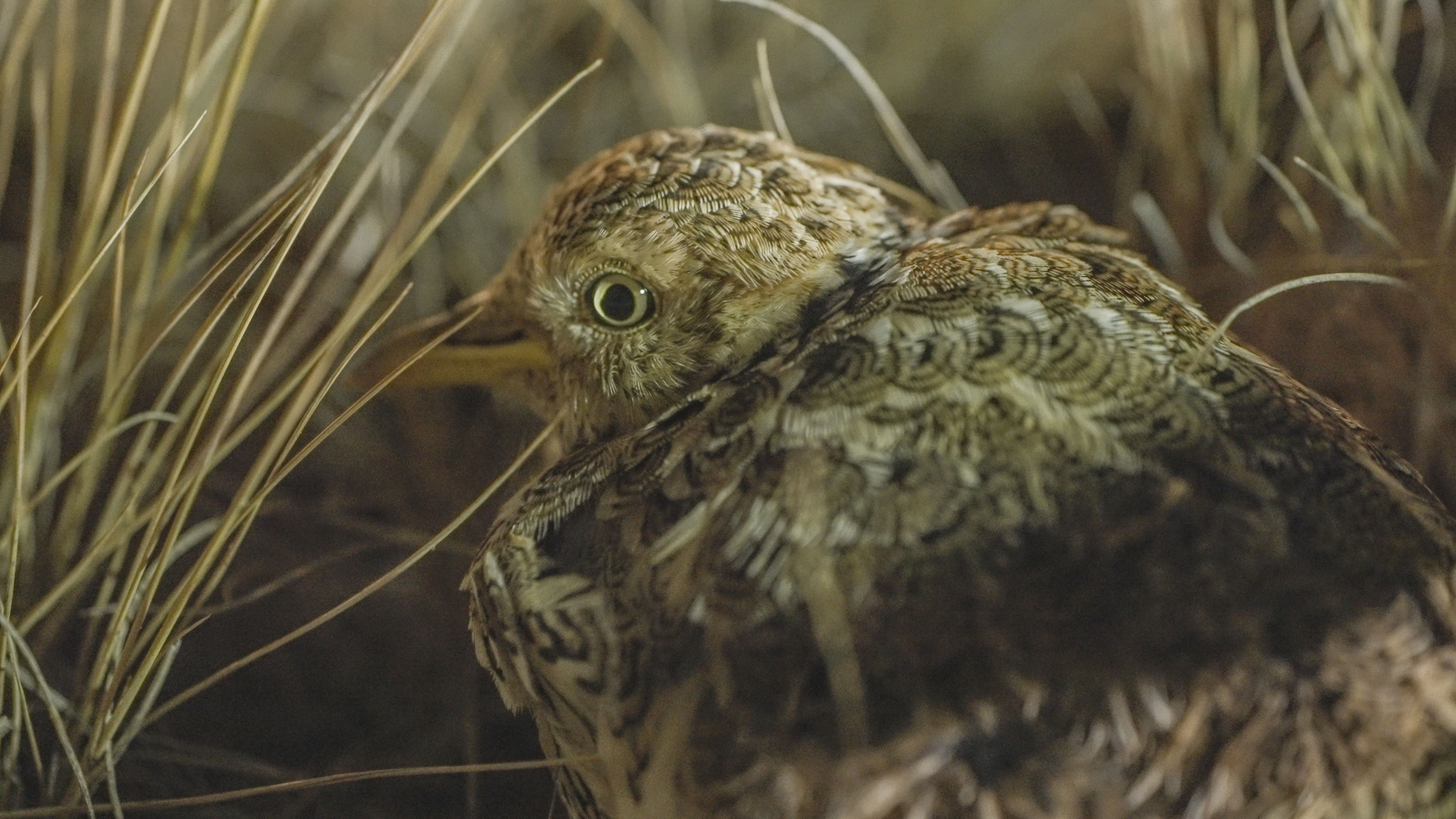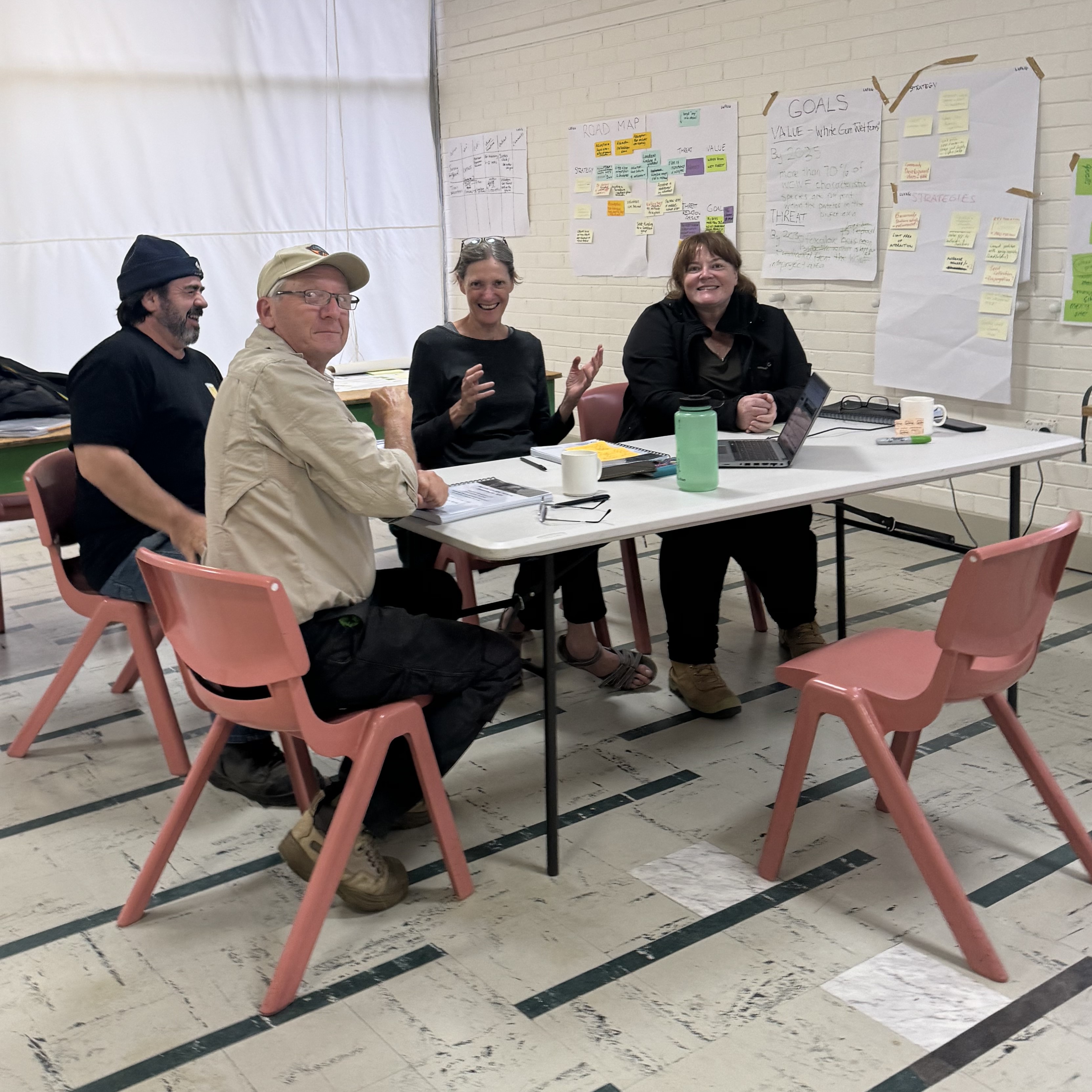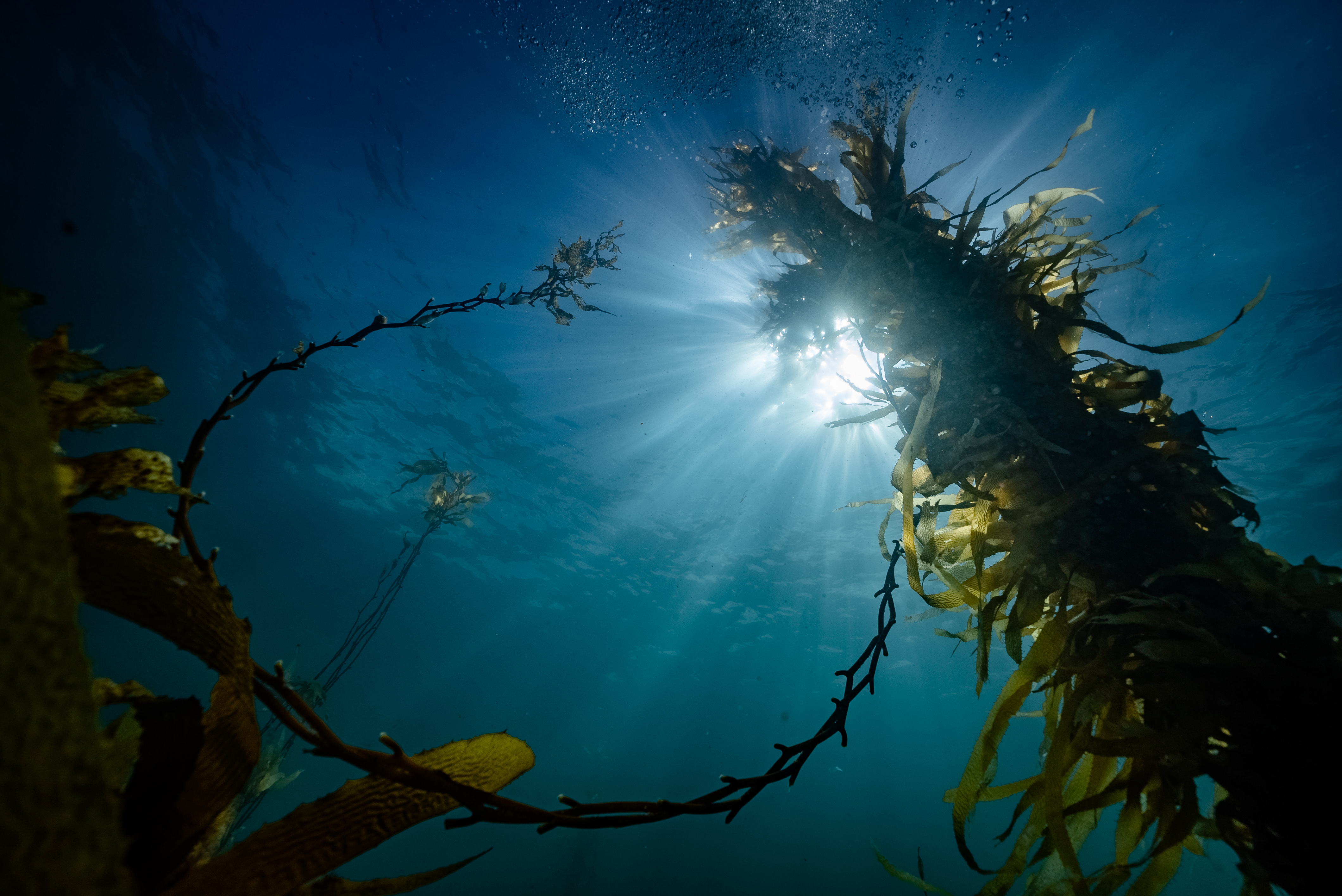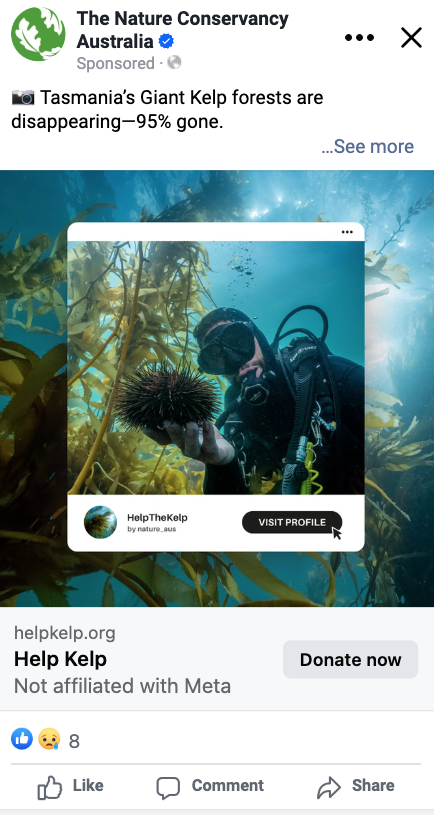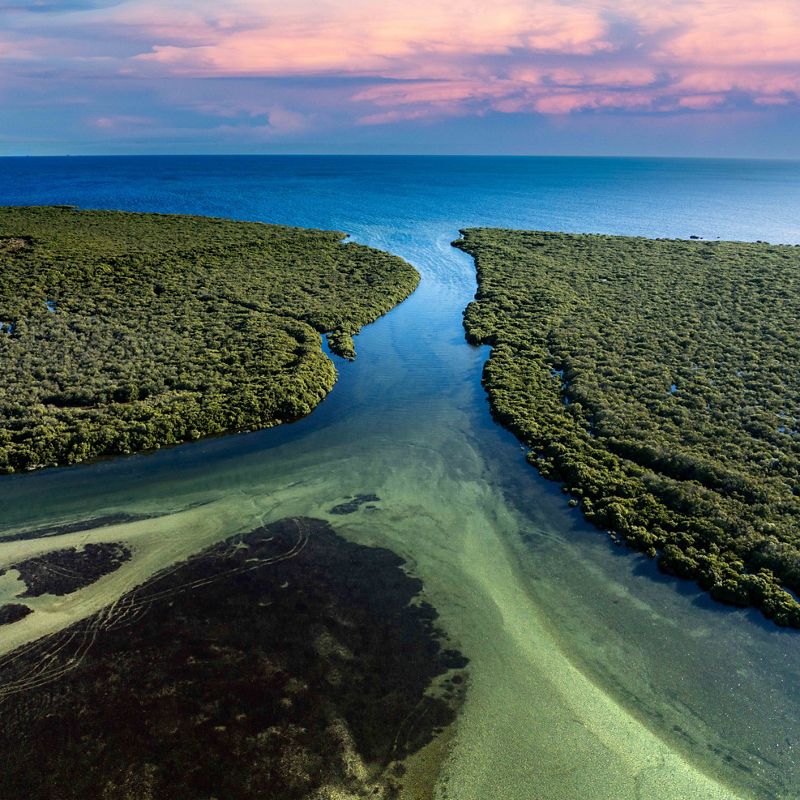
In search of the Plains - wanderer
Last month, a few of TNC’s dedicated supporters had the opportunity to go out in the field on a trip to Patho Plains, in search of the critically endangered Plains-wanderer. Led by Rich Faulkner, Conservation Coordinator TNC, Rob McLean AM, TNC Board Chair and Christine Christian AO, TNC Board Deputy Chair, the two-day trip connected donors with our passionate project partners and some of the key landholders involved in the project.
Through an innovative financing approach, TNC has been working with Trust for Nature (TfN) in supporting private landholders to permanently protect some of the nation's most important and threatened grassland ecosystems and habitat for a multitude of bird species including the Plains-wanderer.
Following an afternoon of networking, the group drove out to the plains as the golden hues of sunset washed across the landscape. After dark, guests went ‘spotlighting’ with expert ecologist Daniel Nugent, looking out for the elusive Plains-wanderer. Incredibly, the group were treated to a sighting of an adult female, with Daniel quickly engaging ‘Irwin Mode’ to gently net the bird so that guests could take a closer look at one of the rarest birds on the planet. Shortly after, Daniel pointed out a couple of adult and sub-adult males, watching them from a distance as they scurried amongst the tussocks.
The Patho Plains project was nominated for a Banksia Sustainability Award in the Biodiversity division. TNC attended the Awards evening with TfN on 3 April, and although the project didn’t win, we are thrilled to be recognised amongst the nation’s other leading organisations in making change for the better.
Supporting Tebrakunna Rangers
In late January, three Tebrakunna rangers from Melaythenner Teackanna Warrana Aboriginal Corporation attended five days of Healthy County Planning (HCP) training at Poatina, Tasmania. Participants learned the concepts of HCP by using Liffey Vally in Tasmania’s Midlands as a case study. The Liffey Valley includes World Heritage values set in a diverse landscape - offering perfect environment to utilise the skills learned. The training included public speaking, group projects, networking, and building the foundations of HCP applications. The Nature Conservancy’s Indigenous Landscapes team supported this endeavor by funding the ranger’s participation in the five-day training session.
Jarrod Edwards, Ranger Program Manager at Melaythenner Teackanna Warrana Aboriginal Corporation reflected on the benefits that all the rangers gained during the training, “The foundational knowledge of the HCP process we came away with from the week was invaluable to us personally, but importantly to us at Melaythenner Teackanna Warrana, our members and community. We started our own HCP development not long after the workshop.”
Aran O’Neil, Tebrakunna Ranger, highlighted how rewarding he found the experience and believed that being able to share knowledge and experiences helped other attendees see many different perspectives. “For us Tebrakunna rangers, we felt privileged to be able to yarn with others about cultural knowledge and history, sharing some of our understandings to people from the mainland and vice versa,” he said.
Matt Cameron, Tebrakunna Ranger, also spoke about the importance of the training to implement best practice across Tasmania in conservation. “I was really happy with how people respected First Nation Knowledge and feel positive about the future with our young people, in particular being so happy to learn about how Aboriginal people look after country,” he said.
The HCP intensive program was well received, although challenging, with a lot of information packed into early mornings, long days, and late nights. The rangers felt that the important work they were doing made it all worthwhile and a great steppingstone for implementing the learnings on their own Country.
Jarrod Edwards thanked TNC’s Indigenous Landscapes team for their support and explained that the opportunity was invaluable to their team of rangers. “On behalf of everyone in our ranger program and Melaythenner Teackanna Warrana, I would like to say thank you. We appreciated the kind and generous support and hope we can work together to find ways to do it again in following years,” he said.
The incredible revival of Tasmania’s lost kelp forests
Scott Ling noticed the effects of climate change on our oceans long before he became a marine biologist. Growing up fishing along Tasmania’s rugged east coast, he could see the dramatic transformation with his own eyes.
First came the warm water fish. Then came the sea urchins, devouring the local vegetation and destabilising the region’s delicate marine ecosystem. But it was the disappearance of Tasmania’s giant kelp forests that had the most profound impact on the seascape he knew as a child.
Standing up to 40 metres tall, the sprawling thickets were once so immense that swimming through them felt like navigating dense, underwater jungles. They provided a home to countless marine life, acting as critical habitats and breeding grounds. And then they suddenly started to disappear.
“We had a really big dieback of giant kelp in 2001,” explains Scott, an associate professor at the Institute for Marine and Antarctic Studies. The culprit – a potent combination of warmer water and invasive species – reduced the vibrant ecosystems to barren seascapes. Twenty-three years later, 95% of Tasmania’s kelp forests have vanished.
But peek under Tasmania’s coastal waters today and you just might see new life taking root. Scott leads the research arm of the Tasmanian Giant Kelp Restoration Project, a collaboration between The Nature Conservancy and other partners focused on reviving these underwater forests.
To do this, Scott’s team employs a technique called kelp outplanting, where young kelp is grown in a laboratory before being attached to twine and transplanted into the ocean. The genius of Scott’s solution is that it ensures the kelp’s stability in the roiling ocean waters by securing it to existing reefs.
“It’s exhilarating work,” Scott says, in part because you can see the positive effects occurring almost in real-time. “You have these magic beans, and they just grow so fast,” he says. A seed planted today can be 10 metres tall within just a year.
Never one to rest on his laurels, Scott is already focused on solving the next problem: “How do we scale up? How do we make it self-sustainable and get these ecosystems to come back?”
Success will rely on all the project’s partners, which include The University of Tasmania, Natural Resource Management South and the CSIRO. But Scott singles out The Nature Conservancy as maybe the most crucial partner in the next phase. “They really helped us put together the kelp restoration handbook. And now they’re helping us move from replanting trees to replanting whole forests.”
For Scott, the project offers a beacon of hope. “Outplanting giant kelp is the best therapy for eco grief,” he says. “You have these beans in your hand, and you’re doing something tangible to regrow a forest that’s been lost.”
By restoring these underwater jungles, the project demonstrates that hard work can bring about real change – one seed at a time.
Help the Kelp: Campaign Report
The Nature Conservancy recently held a fundraising campaign for Tasmania’s Giant Kelp project, focusing on the restoration and conservation of this once vast underwater forest. Here’s how the generous donations we received have already been put to work, plus our plans for the year:
Outplanting
Since March 5, the team have been preparing for the 2025 season. Giant Kelp outplanting is most effective from early winter through spring, and this year, outplanting will commence in late May, with 2-3 outplant cohorts planned to deploy prior to November. These will happen at 5 large-scale restoration sites and 5-6 smaller "augmentation" sites, ensuring a wide and effective restoration effort across multiple locations.
Baby Kelp Growth
In the same timeframe, a substantial number of baby kelp have been grown in preparation for the outplanting. Currently, over 4km of twine is being cultured and with density on the twine around 1 kelp per 1cm, that’s over 400,000 baby kelp currently being grown!
Monitoring Dives
Ecological surveys occur regularly at both impact and control sites (25 total sites) to assess the success of outplanting efforts and observe the return of various marine species. Over 75 dives have happened since late last year. Following the outplanting, two "rapid assessment" monitoring dives are scheduled at 3-month intervals, paired with ecological monitoring at both control and impact sites.
"It was extremely encouraging to see so many surviving Giant Kelp after our outplant trial (very small scale) in late 2023 - 2.5 years later, and despite a massive marine heat wave! The growth of baby kelp signifies a promising future for our marine life, as it contributes to the formation of a robust forest canopy."
-Scott Bresckin, Kelp Conservation Officer
Thank you for the incredible generosity shown to support this cause. With the dedication of so many donors – both new and long-time supporters alike - we are making a tangible difference in the preservation and restoration of this precious marine ecosystems.
